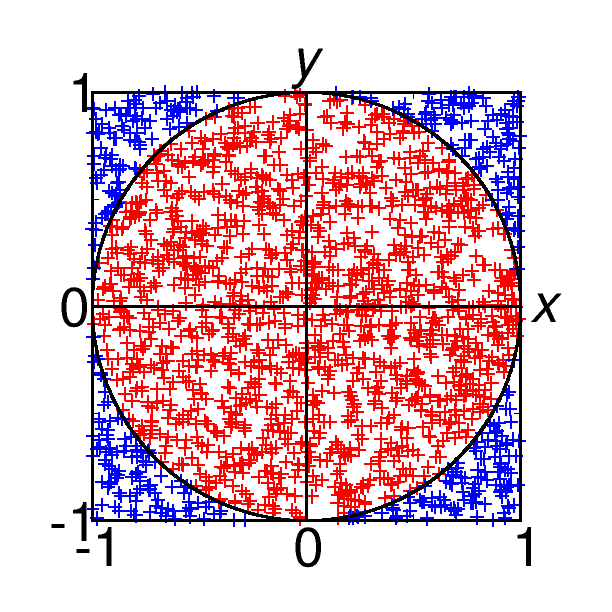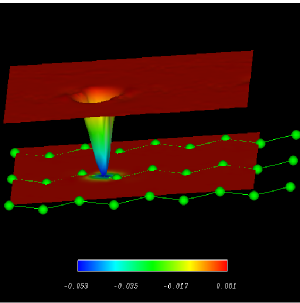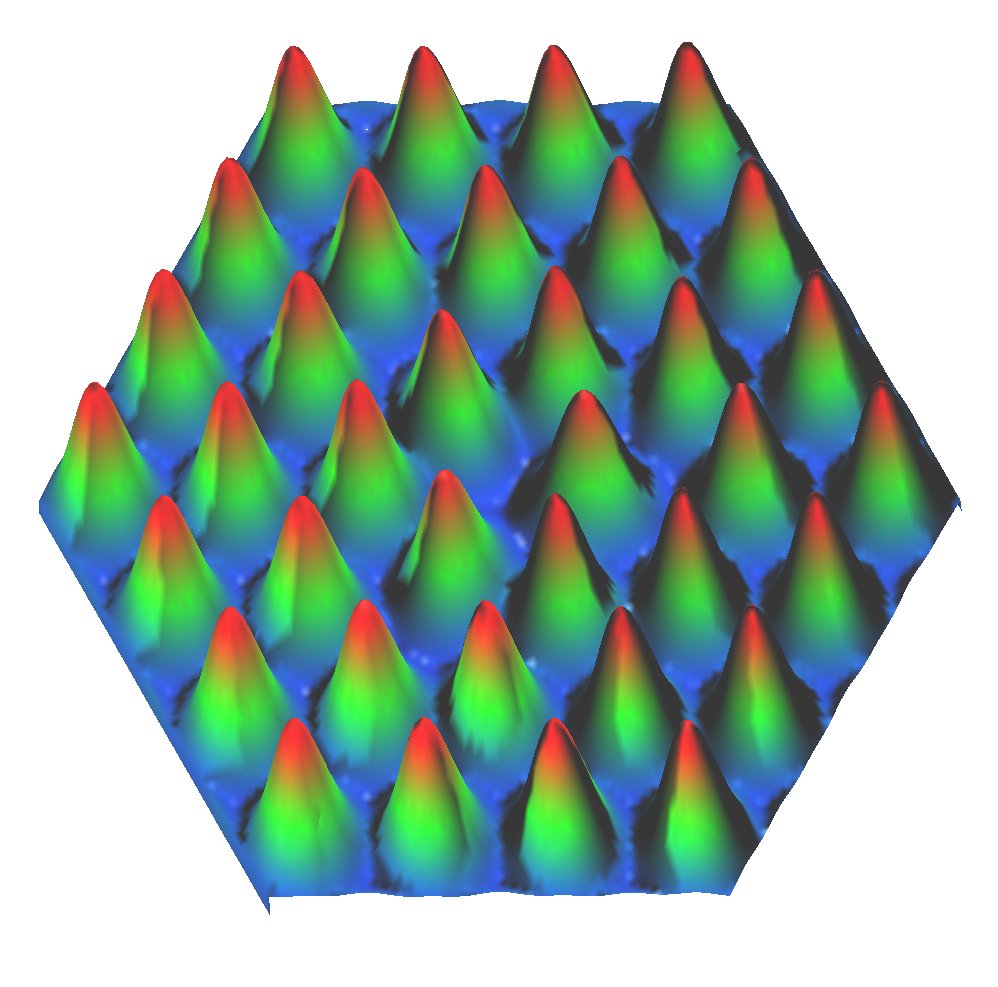Quantum Monte Carlo
This group is led by Richard Needs, with research performed by two subgroups:

|
It may seem surprising at first, but random numbers can be used to
help solve complicated problems in physics. A simple example of one
such Monte Carlo technique (so-called because of the connection
with gambling!) is illustrated in the figure on the left. A series of
random numbers in the interval [-1,1] is generated, which are used in pairs
as the coordinates of a set of points. By counting the fraction of points
which lie inside the circle, which is just the ratio of the areas of
the circle and square, the value of |
|
In quantum mechanics, the state of a system of N electrons is described by a many-body wave-function which is a 3N-dimensional quantity and is impossible to calculate exactly using standard mathematical techniques. The Quantum Monte Carlo (QMC) method offers an efficient computational approach which accurately describes the interactions between electrons. Over the last few years we have developed a general computer program to carry out QMC calculations, named `CASINO'. With the fast parallel computers now available, CASINO provides a powerful and flexible tool for applying the Quantum Monte Carlo method to real systems. Electrons repel one another because they are charged and because they must obey the Pauli exclusion principle. This results in a `hole' being created around each electron, from which other electrons are excluded. The figure on the right, which was created by Randy Hood, shows the hole created by an electron in a real solid as calculated by QMC. |

|

|
One of the simplest many-body quantum system consists of a collection of electrons in a uniform potential, yet even this `simple' system exhibits a wide range of behaviour. An accurate description of this behaviour (using both QMC and more traditional methods) is an important step in understanding many-body phenomena. At high densities these electrons adopt a fluid-like state, but at very low densities they may form a `Wigner crystal'. The figure on the left, which was created by John Trail, shows the electron density of a two dimensional crystal containing a vacancy. The study of systems like this may provide insight into the melting of Wigner crystals and possible realisations of quantum computers. |
 can be estimated.
can be estimated.